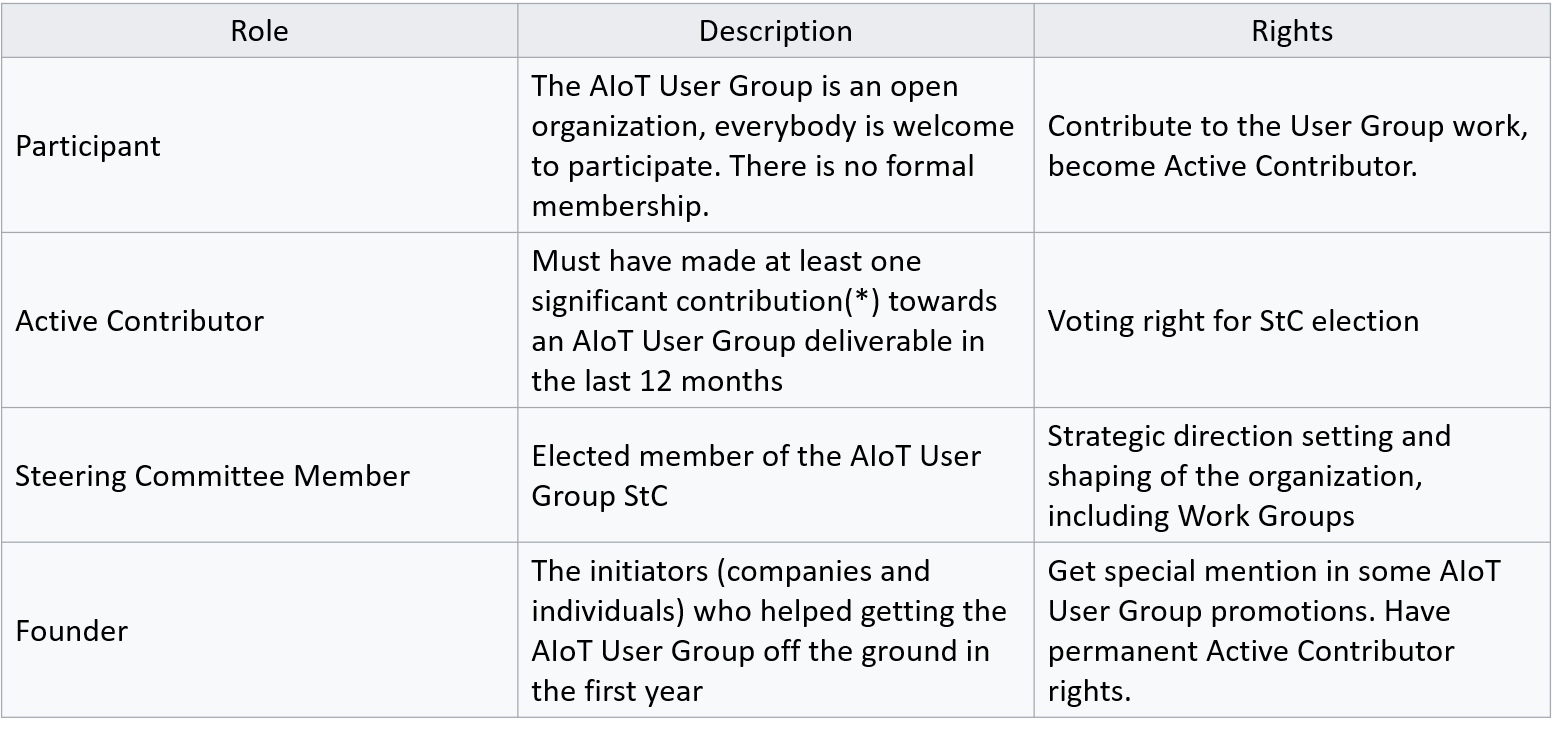Governance
Steering Committee
The Steering Committee (StC) defines the strategic directions of the AIoT User Group, shapes the structure of the organization, identifies and initiates key initiatives, and provides support, guidance and oversight of progress. The StC is elected bi-annually by the Active Contributors. It consists of up to 12 StC members. Every representative of an Active Contributor can apply, with a limit to one application per company. Elections are opened 4 weeks before the actual vote. Each applicant is given the chance to send an application letter to all Active Contributors to introduce himself. The actual voting is done electronically and anonymous. A special election can be held to replace a Steering Committee member who resigns. The first StC is elected by the founders.
The Steering Committee (StC) defines the strategic directions of the AIoT User Group, shapes the structure of the organization, identifies and initiates key initiatives, and provides support, guidance and oversight of progress. The StC is elected bi-annually by the Active Contributors. It consists of up to 12 StC members. Every representative of an Active Contributor can apply, with a limit to one application per company. Elections are opened 4 weeks before the actual vote. Each applicant is given the chance to send an application letter to all Active Contributors to introduce himself. The actual voting is done electronically and anonymous. A special election can be held to replace a Steering Committee member who resigns. The first StC is elected by the founders.


